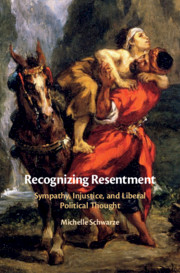22 results
Glory M. Liu: Adam Smith's America: How a Scottish Philosopher Became an Icon of American Capitalism. (Princeton: Princeton University Press, 2022. Pp. xxxii, 348.)
-
- Journal:
- The Review of Politics , First View
- Published online by Cambridge University Press:
- 17 April 2024, pp. 1-2
-
- Article
- Export citation
10 - Narrowing the Scope of Resentment in Smith’s Theory of Moral Sentiments
-
-
- Book:
- Interpreting Adam Smith
- Published online:
- 14 September 2023
- Print publication:
- 28 September 2023, pp 160-176
-
- Chapter
- Export citation
Team effectiveness model for science (TEMS): Using a mutual learning shared mindset to design, develop, and sustain science teams
-
- Journal:
- Journal of Clinical and Translational Science / Volume 5 / Issue 1 / 2021
- Published online by Cambridge University Press:
- 21 July 2021, e157
-
- Article
-
- You have access
- Open access
- HTML
- Export citation
Abbreviations
-
- Book:
- Recognizing Resentment
- Published online:
- 02 October 2020
- Print publication:
- 22 October 2020, pp xii-xiv
-
- Chapter
- Export citation
Dedication
-
- Book:
- Recognizing Resentment
- Published online:
- 02 October 2020
- Print publication:
- 22 October 2020, pp v-vi
-
- Chapter
- Export citation
1 - Vicious Passions
-
- Book:
- Recognizing Resentment
- Published online:
- 02 October 2020
- Print publication:
- 22 October 2020, pp 25-45
-
- Chapter
- Export citation
Copyright page
-
- Book:
- Recognizing Resentment
- Published online:
- 02 October 2020
- Print publication:
- 22 October 2020, pp iv-iv
-
- Chapter
- Export citation
Conclusion
-
- Book:
- Recognizing Resentment
- Published online:
- 02 October 2020
- Print publication:
- 22 October 2020, pp 129-141
-
- Chapter
- Export citation
Introduction
-
- Book:
- Recognizing Resentment
- Published online:
- 02 October 2020
- Print publication:
- 22 October 2020, pp 1-24
-
- Chapter
- Export citation
2 - Innocent Resentment, Sympathy, and Liberal Duty in Butler
-
- Book:
- Recognizing Resentment
- Published online:
- 02 October 2020
- Print publication:
- 22 October 2020, pp 46-64
-
- Chapter
- Export citation
Contents
-
- Book:
- Recognizing Resentment
- Published online:
- 02 October 2020
- Print publication:
- 22 October 2020, pp vii-vii
-
- Chapter
- Export citation
Index
-
- Book:
- Recognizing Resentment
- Published online:
- 02 October 2020
- Print publication:
- 22 October 2020, pp 155-155
-
- Chapter
- Export citation
3 - Sympathizing with Injustice
-
- Book:
- Recognizing Resentment
- Published online:
- 02 October 2020
- Print publication:
- 22 October 2020, pp 65-97
-
- Chapter
- Export citation
Acknowledgments
-
- Book:
- Recognizing Resentment
- Published online:
- 02 October 2020
- Print publication:
- 22 October 2020, pp viii-xi
-
- Chapter
- Export citation
Bibliography
-
- Book:
- Recognizing Resentment
- Published online:
- 02 October 2020
- Print publication:
- 22 October 2020, pp 142-154
-
- Chapter
- Export citation
4 - Coping with Resentment
-
- Book:
- Recognizing Resentment
- Published online:
- 02 October 2020
- Print publication:
- 22 October 2020, pp 98-128
-
- Chapter
- Export citation

Recognizing Resentment
- Sympathy, Injustice, and Liberal Political Thought
-
- Published online:
- 02 October 2020
- Print publication:
- 22 October 2020
The Opinion of Mankind: Sociability and the Theory of the State from Hobbes to Smith. By Paul Sagar. Princeton, NJ: Princeton University Press, 2018. 280p. $45.00 cloth, $29.95 paper.
-
- Journal:
- Perspectives on Politics / Volume 17 / Issue 3 / September 2019
- Published online by Cambridge University Press:
- 21 August 2019, pp. 873-874
- Print publication:
- September 2019
-
- Article
- Export citation
The Rhetoric of Sincerity: Cicero and Smith on Propriety and Political Context
-
- Journal:
- American Political Science Review / Volume 110 / Issue 1 / February 2016
- Published online by Cambridge University Press:
- 08 March 2016, pp. 100-111
- Print publication:
- February 2016
-
- Article
- Export citation
Analytical Modeling of Radial Velocity Curves of Hα Emission from WW And
-
- Journal:
- Proceedings of the International Astronomical Union / Volume 8 / Issue S290 / August 2012
- Published online by Cambridge University Press:
- 21 February 2013, pp. 303-304
- Print publication:
- August 2012
-
- Article
-
- You have access
- Export citation



